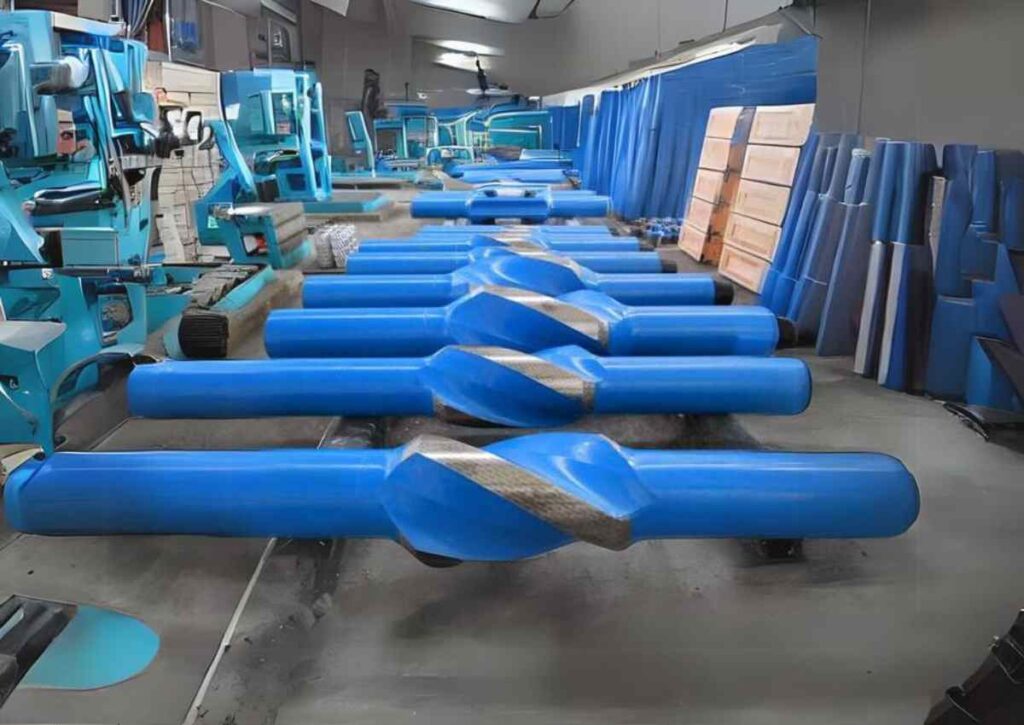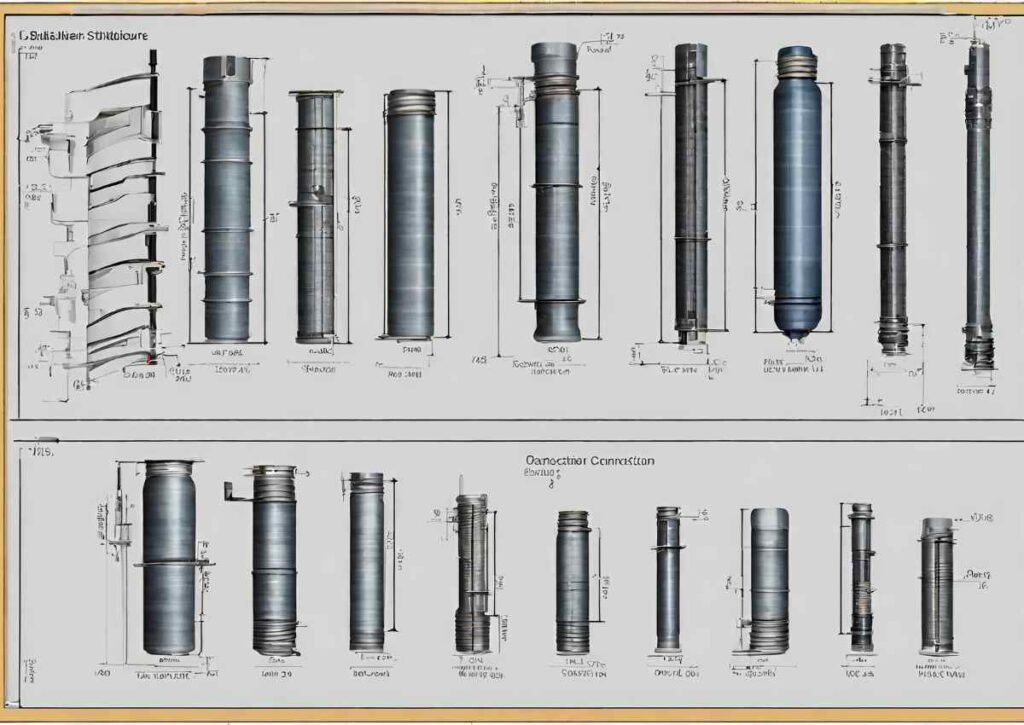In the world of drilling, where we dig deep to extract valuable resources, a “drilling stabilizer” acts like a trustworthy guide. Picture it as a smart helper on the drill team.
Its job? Keeping things steady down there in the hole. Imagine you’re drilling a hole in the ground; it’s not as simple as it sounds.
There’s wobbling, vibrations, and the risk of going off track. That’s where the drilling stabilizer steps in. Made of strong steel, it’s like the backbone of the drill, preventing unexpected twists and turns.
In simple terms, it’s the unsung hero ensuring our drilling jobs go smoothly and the holes end up just where we want them.
Composition and Structure
A typical drilling stabilizer consists of a robust hollow cylindrical body and stabilizing blades, both meticulously crafted from high-strength steel.
These blades, available in straight or spiraled configurations, boast hardfacing for optimal wear resistance, promising durability in challenging drilling environments.
Importance of Drilling Stabilizers

The significance of drilling stabilizers in the oil and gas industry cannot be overstated.
Beyond mere mechanical stability, these devices play a pivotal role in enhancing the efficiency, safety, and cost-effectiveness of drilling operations.
By preventing unintentional sidetracking and minimizing vibrations, drilling stabilizers contribute to the creation of high-quality boreholes, ensuring the success of drilling projects.
Types of Drilling Stabilizers
Integral Stabilizers
Integral stabilizers, machined from a single piece of high-strength steel, embody reliability and structural integrity.
The elimination of joints reduces the risk of failures associated with separate components.
Their versatility, with options for both spiral and straight blades, makes them a popular choice across various drilling scenarios.
Replaceable Sleeve Stabilizers
In remote areas where repair facilities are scarce, the replaceable sleeve stabilizer emerges as a practical solution.
The design allows for easy replacement of sleeves on the drill floor, minimizing downtime and providing a cost-effective alternative.
The ability to interchange sleeves of different sizes adds an extra layer of adaptability to this stabilizer.
Welded Blade Stabilizers
While integral stabilizers are the norm, welded-blade stabilizers offer an economical alternative for softer formations.
The welding process, combined with full-length heat treatment and rigorous testing, ensures these stabilizers can withstand the demands of drilling in less challenging geological conditions.
Non-Rotating Sleeve Stabilizer (Rubber Sleeve Stabilizer)
The innovation of a non-rotating sleeve stabilizer, constructed from special polyurethane, addresses specific challenges in hard and abrasive formations.
By remaining stationary on the mandrel during drilling, it provides stability without the need for underreaming.
The lower wear on sleeves compared to other stabilizer types contributes to a longer operational life.
Applications and Placement

Understanding the strategic placement of stabilizers in the bottom hole assembly (BHA) is essential for optimizing drilling performance.
Typically, a combination of 2 to 3 stabilizers is incorporated, with one positioned just above the drill bit (a near-bit stabilizer) and one or two among the drill collars (string stabilizers).
This configuration ensures an efficient distribution of weight, stiffens the BHA, and reduces the risk of stuck pipes.
Tailored Solutions and Customization
Our commitment to providing tailored solutions extends beyond the types of stabilizers to include custom specifications.
Hole sizes, neck diameters, and connections are common stabilizer specifications, but we understand that drilling projects can vary widely.
Upon request, we can accommodate unique dimensions, ensuring a precise fit for your specific drilling requirements.
Stabilizer Sizes and Connections

For your convenience, common stabilizer specifications, including hole sizes, neck diameters, and connections, are readily available.
Custom dimensions can be accommodated upon request, ensuring a seamless fit for your specific drilling requirements.
Conclusion
In conclusion, drilling stabilizers emerge as indispensable assets in the realm of drilling operations.
Their diverse types, strategic placements, and considerations in selection make them versatile tools that can be tailored to meet the unique challenges of different drilling environments.
As technology continues to evolve, so too will the capabilities of drilling stabilizers, contributing to the ongoing advancement of the oil and gas industry.
Choose the right stabilizer for your drilling needs and embark on a journey of enhanced stability, efficiency, and success.
FAQs
What is the primary purpose of a Drilling Stabilizer in oil and gas drilling?
A drilling stabilizer is a crucial tool designed to maintain borehole stability during drilling operations by minimizing vibrations and lateral movements.
It enhances drilling efficiency and ensures accurate wellbore placement, ultimately optimizing the overall drilling process.
What is the primary purpose of a drilling stabilizer in the oil and gas industry?
The main purpose of a drilling stabilizer is to mechanically stabilize the bottom hole assembly (BHA) of a drill string.
It prevents unintentional sidetracking, minimizes vibrations, and ensures the quality of the borehole during drilling operations.
How are integral stabilizers different from other types, and why are they commonly used?
Integral stabilizers are machined from a single piece of high-strength steel, eliminating the risk of blades falling into the wellbore.
They offer structural integrity and versatility, with options for both spiral and straight blades.
Integral stabilizers are commonly used due to their reliability and reduced likelihood of component failures.
In what scenarios is the replaceable sleeve stabilizer a practical choice, and what advantages does it offer?
The replaceable sleeve stabilizer is ideal in remote areas where repair facilities are scarce. Its design allows for easy sleeve replacement on the drill floor, minimizing downtime.
Additionally, the interchangeability of sleeves of different sizes adds flexibility, making it a cost-effective solution.
Can welded blade stabilizers be used in oil wells, and what precautions should be taken?
Welded blade stabilizers are an economical alternative for soft and medium-hard formations. However, they are usually not advised in oil wells due to the risks associated with potential blade loss.
They are frequently used in drilling water wells or in low-cost oilfields where such risks are minimized.
How do drilling stabilizers contribute to reducing the risk of stuck pipes during drilling operations?
Stabilizers play a crucial role in concentrating the weight of drill collars on the drill bit, stiffening the bottom hole assembly (BHA), and keeping the drill collars away from the borehole wall.
This strategic configuration minimizes the risk of stuck pipes, contributing to smoother drilling operations.
Are rubber sleeve stabilizers suitable for abrasive formations, and how do they differ from other stabilizer types?
Rubber sleeve stabilizers, made from special polyurethane, are suitable for use in hard and abrasive formations.
Unlike other stabilizer types, the rubber sleeve remains stationary on the mandrel during drilling, providing stability without underreaming.
The lower wear on rubber sleeves contributes to an extended operational life.
Also Read
Annulus Drilling: Innovations in Efficient Drill Techniques









